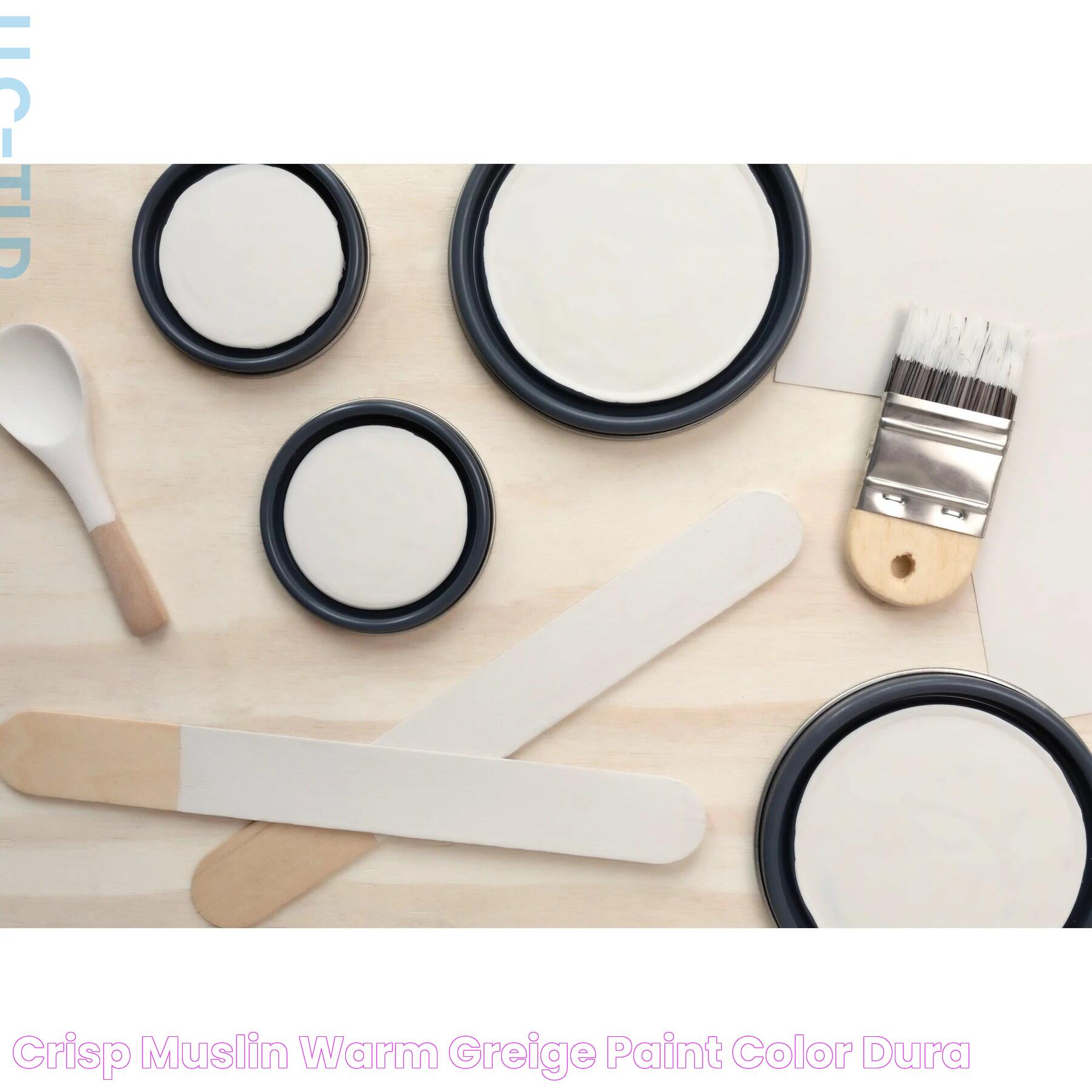Crisp muslin, a term that evokes images of delicate yet durable fabric, is a cornerstone of textile history. Known for its lightweight texture and breathable qualities, muslin has been cherished across cultures for centuries. Originating from the Middle East, this fabric was once traded along the Silk Road, finding its way into the wardrobes of royalty and commoners alike. Its versatility makes it suitable for a range of applications, from fashion to home décor, and even in specialized sectors like medicine and industry.
In the modern world, the appeal of crisp muslin remains unwavering. This fabric's ability to blend comfort with elegance makes it a preferred choice for designers and consumers. Its adaptability means it can be transformed into anything from luxurious gowns to practical curtains. The weaving techniques used to produce muslin have evolved over time, enhancing its quality and expanding its uses. Today's muslin is not only a testament to its rich history but also a marker of innovation in textile manufacturing.
As we delve deeper into the essence of crisp muslin, we'll explore its origins, production processes, and contemporary relevance. This article aims to provide a comprehensive understanding of this remarkable fabric, highlighting its enduring charm and functionality. Whether you're a textile enthusiast or someone curious about fabric history, the journey through the world of muslin promises to be enlightening and engaging.
Read also:Listen To Nle Choppa Or What A Deep Dive Into His Music And Influence
Table of Contents
- Origin and History of Muslin
- How is Crisp Muslin Made?
- Different Types of Muslin Fabric
- What Makes Muslin So Special?
- Uses of Crisp Muslin in Fashion
- Muslin in Home Décor
- Muslin in Medical and Industrial Applications
- How to Care for Crisp Muslin?
- Environmental Impact of Muslin Production
- Cultural Significance of Muslin
- The Future of Crisp Muslin
- Frequently Asked Questions
- Conclusion
Origin and History of Muslin
The story of muslin begins in ancient times, with its origins tracing back to the Bengal region, now part of modern-day Bangladesh and India. The earliest references to muslin date back to the 9th century, where it was noted for its fine quality and was exported to the Middle East and Europe. The name 'muslin' is believed to have been derived from the city of Mosul in Iraq, where the fabric was first encountered by European traders.
The fabric gained immense popularity during the 17th and 18th centuries, with its delicate weave and airy texture making it a prized material for clothing, particularly in Europe. During the Mughal era in India, muslin reached its zenith, with intricate weaving techniques producing varieties like Jamdani, which were highly sought after by nobility.
However, the advent of the Industrial Revolution brought significant changes to muslin production. The introduction of mechanized looms allowed for mass production, but also led to a decline in the traditional hand-weaving practices. Despite these changes, muslin has retained its significance, adapting to modern needs while preserving its historical essence.
How is Crisp Muslin Made?
The production of crisp muslin involves a meticulous process that requires skill and precision. Traditionally, muslin was handwoven using fine cotton yarns, resulting in a lightweight and breathable fabric. Today, the process has been modernized, but the essence remains the same.
Raw Material Selection
Muslin is primarily made from cotton, but other fibers like silk and wool can also be used. The quality of the cotton is crucial, as it influences the fabric's final texture and strength. Long-staple cotton is preferred for its durability and softness.
Spinning and Weaving
After selecting the raw materials, the cotton fibers are spun into yarns. This is followed by weaving, where the yarns are interlaced to form the fabric. The weaving technique used determines the weight and texture of the final product. For crisp muslin, a tighter weave is employed to achieve a firm yet soft finish.
Read also:Insights Into The Vince Staples Show Trailer A Mustwatch For Fans
Advancements in technology have introduced automated weaving machines, allowing for faster production without compromising quality. This has made muslin more accessible and affordable, catering to a wider audience.
Different Types of Muslin Fabric
Muslin is not a one-size-fits-all fabric; it comes in various types, each with unique characteristics and uses. Understanding these differences can help in selecting the right type for specific applications.
Gauze Muslin
Gauze muslin is extremely lightweight and open-weave, making it ideal for applications that require breathability, such as medical dressings and summer clothing.
Swiss Muslin
Swiss muslin is known for its fine, smooth texture and is often used in high-end fashion garments. It's characterized by its delicate and luxurious feel.
Jamdani Muslin
Jamdani is a traditional form of muslin that features intricate patterns woven into the fabric. This type is often used for saris and other traditional garments in South Asia.
Sheer Muslin
Sheer muslin is semi-transparent and is commonly used for curtains and drapes, providing privacy while allowing light to pass through.
What Makes Muslin So Special?
The allure of muslin lies in its unique properties that offer numerous benefits, making it a versatile choice for various applications.
Breathability
One of the standout features of muslin is its breathability. The open weave allows air to circulate, keeping the wearer cool and comfortable, which is particularly beneficial in hot climates.
Absorbency
Muslin's absorbent nature makes it an excellent choice for towels and baby products. It can effectively wick moisture away from the skin, keeping it dry and comfortable.
Durability
Despite its lightweight nature, muslin is surprisingly durable. It can withstand repeated washings and wear, maintaining its quality over time, which is why it's favored for items like swaddling clothes and dish towels.
Versatility
Muslin's versatility is unmatched. It can be used in clothing, home décor, and even in industrial applications. Its adaptability to different needs and styles makes it a staple in various sectors.
Uses of Crisp Muslin in Fashion
Muslin has long been a fabric of choice in the fashion industry, appreciated for its lightweight texture and elegant drape. Designers favor muslin for its adaptability and ease of use in creating a variety of garments.
Summer Dresses
Due to its breathable nature, muslin is perfect for summer dresses, offering comfort and style during warm weather. The fabric's ability to hold dye well means it can be found in a myriad of colors and patterns.
Blouses and Shirts
Muslin's softness and drape make it ideal for blouses and shirts. It provides a flattering fit while remaining comfortable throughout the day.
Underlining and Mock-ups
In fashion design, muslin is often used for underlining garments or creating mock-ups. Its affordability and workability allow designers to experiment with patterns and fits before finalizing a design.
Muslin in Home Décor
Muslin's versatility extends beyond fashion into home décor, where it is used for its aesthetic appeal and functional attributes.
Curtains and Drapes
Sheer muslin is a popular choice for curtains and drapes, providing privacy without sacrificing natural light. Its ease of maintenance and ability to complement various interior styles make it a favorite among homeowners.
Table Linens
Muslin's absorbency and durability make it suitable for table linens. It can be dyed or printed to match any décor theme, adding a touch of elegance to dining settings.
Pillow Covers
Muslin pillow covers offer a soft and comfortable surface, enhancing the comfort of living spaces while being easy to wash and maintain.
Muslin in Medical and Industrial Applications
Beyond fashion and home décor, muslin has found its place in medical and industrial sectors, proving its utility across various fields.
Medical Dressings
Muslin's breathability and softness make it ideal for medical dressings. It is used to cover wounds, providing protection while allowing air circulation to promote healing.
Filtration
In industrial applications, muslin is utilized as a filtration material due to its ability to trap particles while allowing air and liquids to pass through.
How to Care for Crisp Muslin?
Proper care and maintenance can extend the life of muslin products, preserving their quality and appearance over time.
Washing
Muslin can be machine washed in cold water on a gentle cycle. Avoid using bleach, as it can weaken the fibers. For best results, hang dry to prevent shrinkage.
Ironing
To remove wrinkles, muslin can be ironed on a low setting. Using a pressing cloth can help prevent any potential damage from direct heat.
Environmental Impact of Muslin Production
The production of muslin, like many textiles, has environmental implications. However, efforts are being made to reduce its impact through sustainable practices.
Sustainable Cotton Sourcing
Using sustainably sourced cotton can reduce the environmental footprint of muslin production. Organic cotton farming practices, which avoid harmful pesticides and fertilizers, contribute to the sustainability of muslin.
Efficient Manufacturing Processes
Advancements in technology have led to more efficient manufacturing processes, reducing waste and energy consumption during muslin production.
Cultural Significance of Muslin
Muslin holds cultural importance in various regions, particularly in South Asia, where it is celebrated for its historical and traditional value.
Traditional Garments
In countries like India and Bangladesh, muslin is used to create traditional garments such as saris and dhotis. These garments are not only a part of daily wear but also hold ceremonial significance.
Historical Context
Muslin has played a role in shaping cultural identities, with its history reflecting the socio-economic changes in regions where it is produced and used.
The Future of Crisp Muslin
The future of muslin looks promising, with innovations in production and a growing emphasis on sustainability guiding its development.
Technological Advancements
Emerging technologies in textile manufacturing are enhancing the quality and versatility of muslin, opening new possibilities for its use.
Sustainable Practices
As consumers become more environmentally conscious, the demand for sustainably produced muslin is likely to increase, driving changes in production practices.
Frequently Asked Questions
1. What is crisp muslin used for?
Crisp muslin is used in fashion for clothing like dresses and shirts, in home décor for curtains and linens, and in medical and industrial applications for dressings and filtration.
2. Is muslin fabric breathable?
Yes, muslin is highly breathable due to its open weave, making it an ideal fabric for warm weather clothing and bedding.
3. How do you care for muslin fabric?
Muslin should be washed in cold water on a gentle cycle and air-dried to prevent shrinkage. It can be ironed on a low setting if needed.
4. What makes muslin different from other cotton fabrics?
Muslin is distinguished by its lightweight and airy weave, offering breathability and softness not typically found in other cotton fabrics.
5. Is muslin fabric sustainable?
Muslin can be sustainable if produced using organic cotton and efficient manufacturing practices. Efforts are underway to reduce its environmental impact.
6. Can muslin be used for quilting?
Yes, muslin can be used for quilting, especially as backing fabric, due to its softness and durability.
Conclusion
Crisp muslin stands as a testament to the enduring allure of natural fabrics, with its rich history and versatile applications continuing to captivate and serve diverse needs. Its journey from ancient times to modern-day usage reflects not only its adaptability but also the evolving demands of society. As we move towards a more sustainable future, the role of muslin in fashion, home décor, and industry is likely to expand, driven by innovations in technology and a growing appreciation for environmentally friendly materials. Whether admired for its cultural significance or valued for its practical benefits, crisp muslin remains a cherished fabric across the globe.

